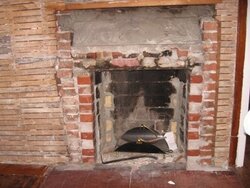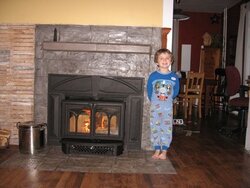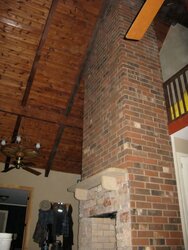Hi all,
I'm thinking about how I want to prepare my home for maximum heating. Obviously things like air-sealing and insulating are big, but I have one other idea I thought I'd share with the forum:
My Lopi Republic 1750 insert is going to be put into a narrow, long room (approximately 10 feet wide by 40 feet long, of which 20 feet is the kitchen area). Directly in front of the fireplace is our sofa and TV, and our favorite spot in the house.
We have a nice ceiling fan and other fans that will help circulate heat, but I thought this might be a great candidate for dropping in some real heat-sink mass to help stabilize temperature and provide a nice smooth temperature curve afterwards.
Now, I have no idea how much real mass it would take to create any notable effect, but I've thought about adding several hundred pounds of stone to the hearth area to absorb heat and then give it off slowly after the fire cools down.
Has anyone ever done this? Anything to report if so?
Joe
I'm thinking about how I want to prepare my home for maximum heating. Obviously things like air-sealing and insulating are big, but I have one other idea I thought I'd share with the forum:
My Lopi Republic 1750 insert is going to be put into a narrow, long room (approximately 10 feet wide by 40 feet long, of which 20 feet is the kitchen area). Directly in front of the fireplace is our sofa and TV, and our favorite spot in the house.
We have a nice ceiling fan and other fans that will help circulate heat, but I thought this might be a great candidate for dropping in some real heat-sink mass to help stabilize temperature and provide a nice smooth temperature curve afterwards.
Now, I have no idea how much real mass it would take to create any notable effect, but I've thought about adding several hundred pounds of stone to the hearth area to absorb heat and then give it off slowly after the fire cools down.
Has anyone ever done this? Anything to report if so?

Joe





